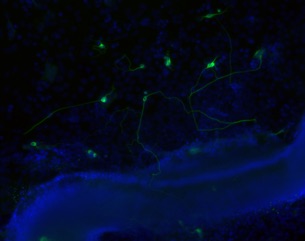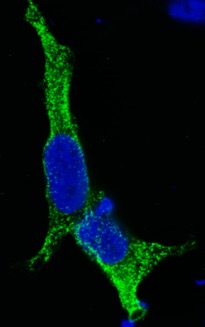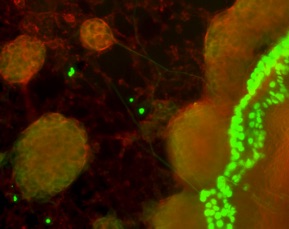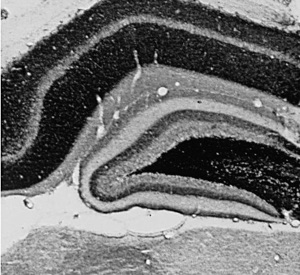RESEARCH











TRPML Ion Channels and Transmembrane (TMEM) Proteins in Endosomes/Lysosomes
Lysosomes are important cell organelles involved in the breakdown of membrane proteins and other molecules. These intracellular vesicles have been implicated in many neurodegenerative disorders such as Mucolipidosis type IV (MLIV) and age-related brain disorders such as Alzheimer’s and Parkinson’s. The lysosomal membrane contains a diverse number of proteins. It is thus not surprising that dysfunctions in one or more of these proteins result in pathological conditions.
The Cuajungco lab is interested in the role that specific lysosomal membrane proteins and ion channels play during normal and pathological states. We currently work on defining the pathological correlates in MLIV and investigating on potential therapeutics for specific brain diseases. Our investigations involve collaborations from various disciplines within CSUF and other institutions. We use cell culture models, and molecular cell biology techniques to accomplish our research goals involving the lysosomal TRPML ion channels, TMEM176A/176B proteins, and TMEM163 zinc effluxer. We perform site-directed mutagenesis and then analyze the celular phenotype to uncover the effects on their function.
TRP Ion Channels, Metal Transporters, and Neurodegenerative Diseases
We are interested in the pathology of certain neurodegenerative disorders. We are looking into the mechanistic link between the zinc transporters and brain diseases. Characterization of the proteins that influence the disease process will enable us to target and neutralize their neuropathological effects. We are currently focusing on TMEM163, a zinc-binding protein, in which our current research findings indicate that it is a zinc efflux transporter. We propose that TMEM163 should be classified as ZNT11 (SLC30A11) as a new member of the Cation Diffusion Facilitator (CDF) family of ZnT protein transporter. We also implicated TMEM163 dysfunction to MLIV and Hypomyelination Leukodystrophy (HLD).